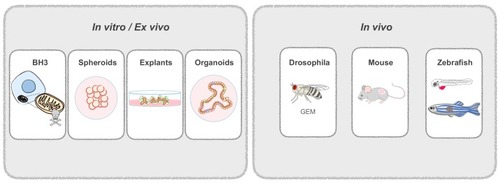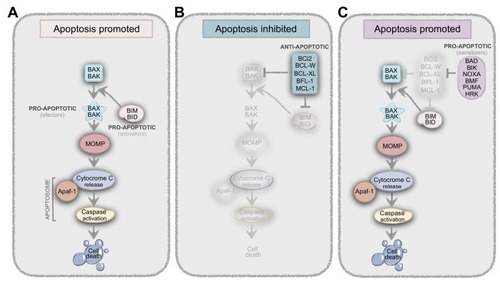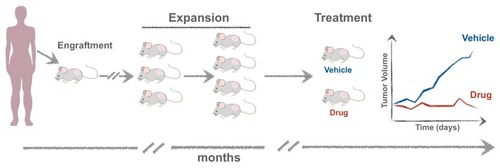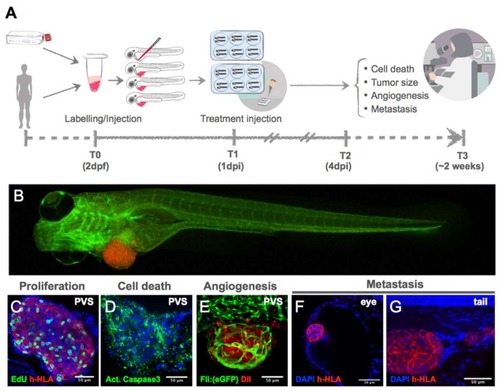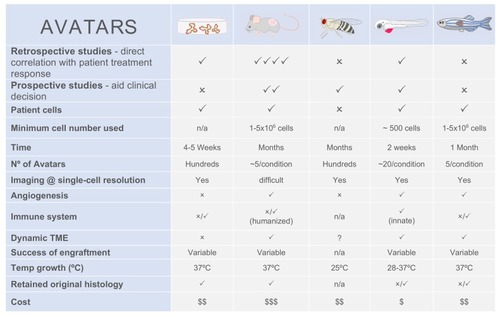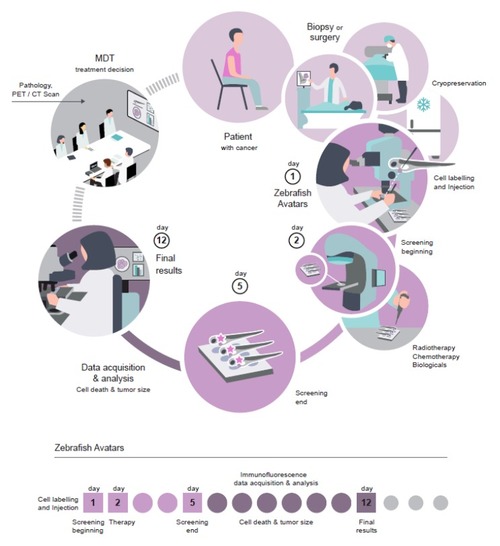- Title
-
Zebrafish Avatars towards Personalized Medicine-A Comparative Review between Avatar Models
- Authors
- Costa, B., Estrada, M.F., Mendes, R.V., Fior, R.
- Source
- Full text @ Cells
|
Patient-derived Avatars. Patient-derived cells are used to generate in vitro and in vivo Avatars. In vitro models include spheroids from dissociated tissue; explants, that are not dissociated and retain the original tissue architecture; and organoids, derived from adult stem cells. In vivo models include genetically engineered drosophila flies that mimic patient mutations; and patient-derived mouse or zebrafish xenografts. Zebrafish can be used at the larval or adult stage. |
|
Balance between pro- and anti-apoptotic proteins result in life-death decisions. ( |
|
Experimental setup for generating mouse Patient-Derived Xenografts (mPDXs). The tumor is minced and transplanted either orthotopically or subcutaneously, embedded in matrigel. When the tumor reaches ~1 cm in diameter, it is excised and propagated into more mice (F2, F3) to obtain cohorts of Avatars where different therapies can be tested. |
|
( |
|
Comparison between patient-derived Avatar models. |
|
Workflow of zebrafish Avatars in the context of personalized medicine. |

